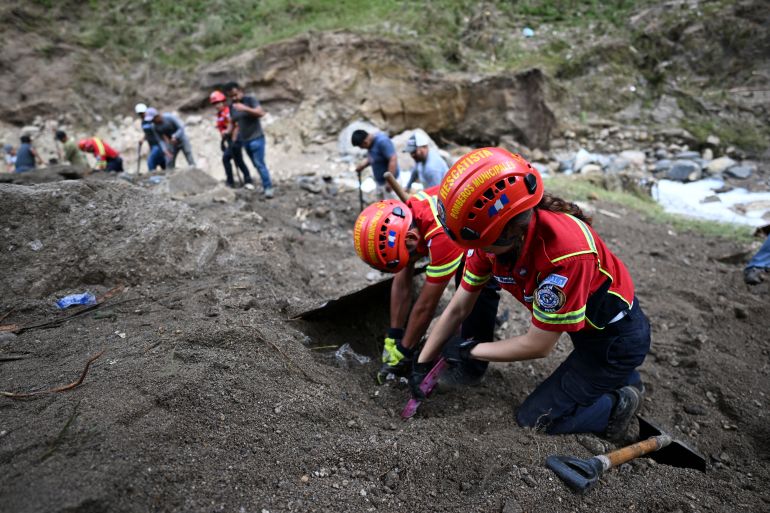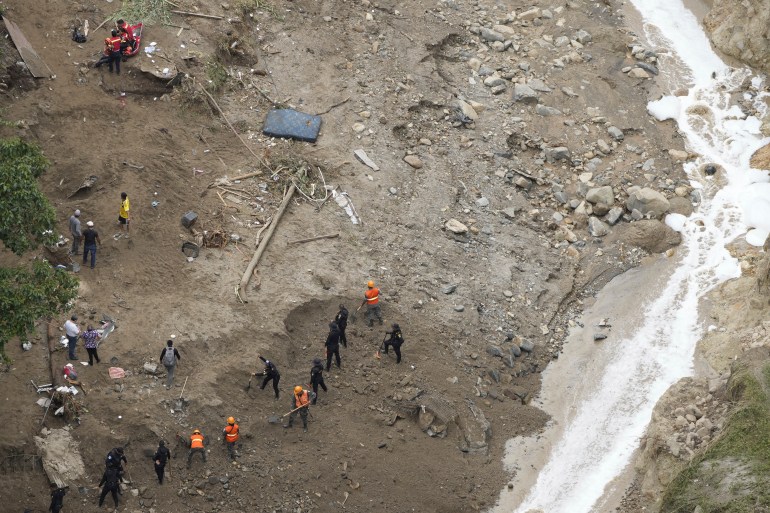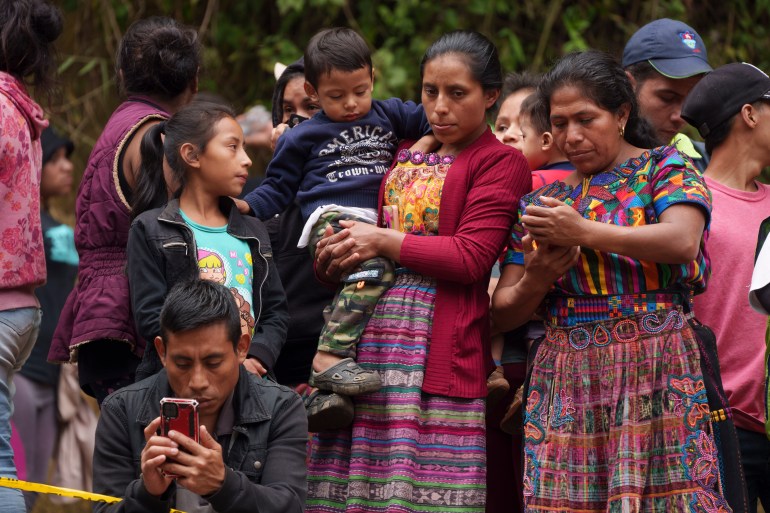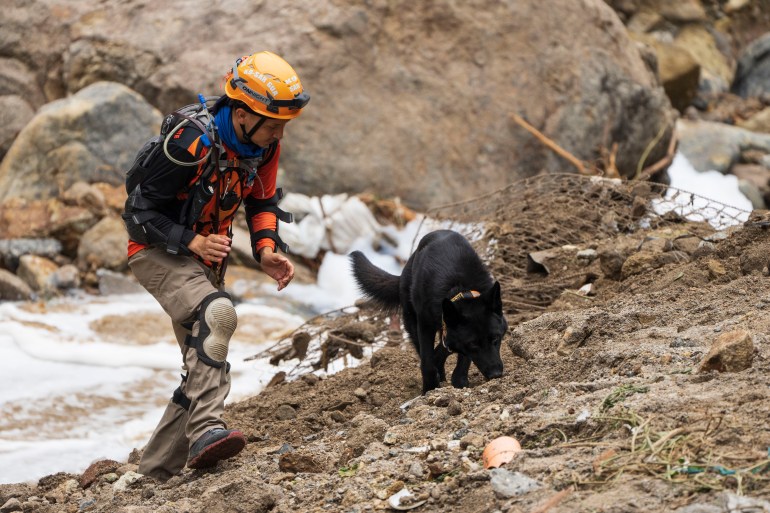Six dead, 12 missing in Guatemala landslides after heavy rain
Six homes have been swept away by the swollen Naranjo River in Guatemala City, with nine children among the missing.

At least six people are dead and 12 others missing after a swollen river swept away homes in Guatemala’s capital city.
Early on Monday, waters from the Naranjo River rushed through a shantytown in Guatemala City called Dios es Fiel, or God is Faithful, destroying at least six homes that had been perched under a bridge, according to Guatemala’s National Coordination for Disaster Reduction agency (CONRED).
Keep reading
list of 3 itemsGuatemala’s crisis deepens amid new raids, suspended gov’t transition
Brazil’s Lula warns Guatemala risks a ‘coup’, prompting rebuke at UN
Search dogs and recovery teams discovered the bodies of six people who died in the flood waters, including that of a young girl, believed to be about five years old. She was found partially buried in the mud that rushed through the area. An estimated eight children were among the 12 still missing.
Heavy rains triggered the high waters, which pushed flows of stones, soil and waste through the settlement.
“The river … took homes, neighbours’ belongings. Neighbours disappeared,” resident Esau Gonzalez, 42, told the AFP news agency.

Residents told AFP they had no choice but to live in the precarious location. Tens of thousands of Guatemalans live in similar shantytowns.
“We knew the risk, [but] we are here out of necessity,” said Marvin Cabrera, 36, a food delivery worker who lived in the area struck by the rising waters.
Guatemala has a 59-percent poverty rate. It also has a housing deficit of about 2 million units, according to the Guatemalan Chamber of Construction and the ANACOVI builders’ association.
Experts say the lack of housing for low-income residents contributes to the construction of informal settlements, often in locations prone to natural disasters.

Iris Lopez, 27, said she hoped the government would move the community to a safer place following Monday’s disaster.
She told the AFP that “nothing remained” of her sister’s rickety house. Luckily, her sister was not home when the water rushed through.
“If she was here, she would have been taken by the river,” Lopez said.
Landslides are a constant threat during Guatemala’s rainy season, which runs from May to November.
At least 29 people have already died from landslides in the country this year, with about 2.1 million people affected overall.
In addition, 10,000 homes have been lost in heavy rains this year. Four roads and nine bridges have also been destroyed.
“I never imagined that the river would rise and take away my entire family,” one grieving resident, Ana Patzan, told the Guatemalan newspaper Prensa Libre after Monday’s flood. “Now there is nothing left. None of them, they are all missing.”

Heavy rains to the north in Mexico likewise caused fatal flooding on Monday, with at least seven people dead in the western state of Jalisco.
There, “atypical rain” pushed the stream in El Jalocote to swell, overflowing into residential areas and forming waves of mud and debris in the area of Autlán de Navarro, some 100 kilometres from the Pacific coast.
Another nine people remain missing, according to the Jalisco state government on Monday. Three other residents were rescued from the flood waters.
“Currently the water level in the stream has dropped, but the large influx of water continues,” the state government posted on social media.
State Governor Enrique Alfaro said more than 107 officers had been deployed to help with search and rescue efforts.
“Preliminarily, damage has been reported so far to five homes, a secondary school, different roads, as well as four intersections with the stream,” Alfaro wrote on the social media platform X.